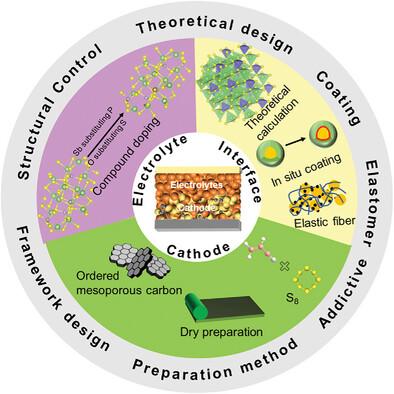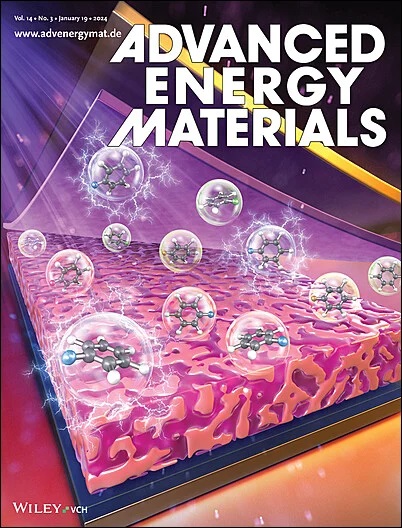Reliable Sulfur Cathode Design for All-Solid-State Lithium Metal Batteries Based on Sulfide Electrolytes
IF 24.4
1区 材料科学
Q1 CHEMISTRY, PHYSICAL
引用次数: 0
Abstract
Sulfide electrolytes are considered the most promising technique for all-solid-state lithium–sulfur batteries (ASLSBs) due to relatively high ionic conductivity and superior chemical compatibility with composite sulfur cathodes. However, sulfur cathodes based on sulfide electrolytes feature large volume expansion, unstable interfacial contact, and inherent insulating nature, which impedes the practical application of ASLSBs. Therefore, a systematic design of the cathode side of ASLSBs is crucial for ensuring a well-contacted, electrochemically stable cathode–electrolyte interface, and an effective ion-electron transfer network. Here, a comprehensive discussion of the latest strategies will be delivered, highlighting their effectiveness in improving the performances of the sulfur cathode in ASLSBs. First, the major challenges including slow oxidation kinetics and significant volume expansion of the sulfur cathode are dissected. Then, the focus is shifted to the degradation processes at the interface between the cathode and electrolyte. Subsequently, the improvement of ionic conductivity and stability of sulfide electrolytes by structural modulation is elaborated. Finally, based on the latest progress, we present a new perspective on constructing an efficient ion-electron transport network and a stable cathode-electrolyte interface, which offers insights and directions for achieving practical ASLSBs in the future.

求助全文
约1分钟内获得全文
求助全文
来源期刊

Advanced Energy Materials
CHEMISTRY, PHYSICAL-ENERGY & FUELS
CiteScore
41.90
自引率
4.00%
发文量
889
审稿时长
1.4 months
期刊介绍:
Established in 2011, Advanced Energy Materials is an international, interdisciplinary, English-language journal that focuses on materials used in energy harvesting, conversion, and storage. It is regarded as a top-quality journal alongside Advanced Materials, Advanced Functional Materials, and Small.
With a 2022 Impact Factor of 27.8, Advanced Energy Materials is considered a prime source for the best energy-related research. The journal covers a wide range of topics in energy-related research, including organic and inorganic photovoltaics, batteries and supercapacitors, fuel cells, hydrogen generation and storage, thermoelectrics, water splitting and photocatalysis, solar fuels and thermosolar power, magnetocalorics, and piezoelectronics.
The readership of Advanced Energy Materials includes materials scientists, chemists, physicists, and engineers in both academia and industry. The journal is indexed in various databases and collections, such as Advanced Technologies & Aerospace Database, FIZ Karlsruhe, INSPEC (IET), Science Citation Index Expanded, Technology Collection, and Web of Science, among others.
 求助内容:
求助内容: 应助结果提醒方式:
应助结果提醒方式:


